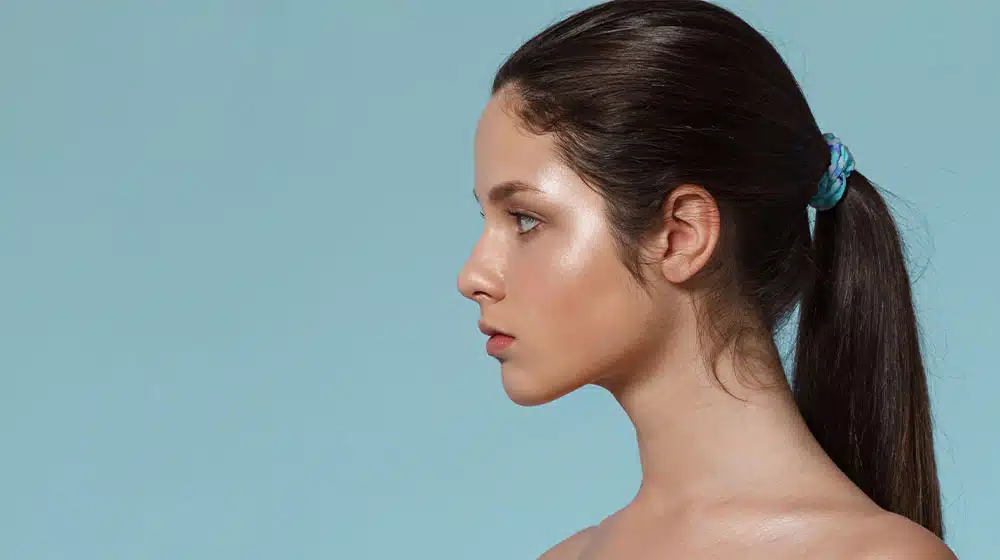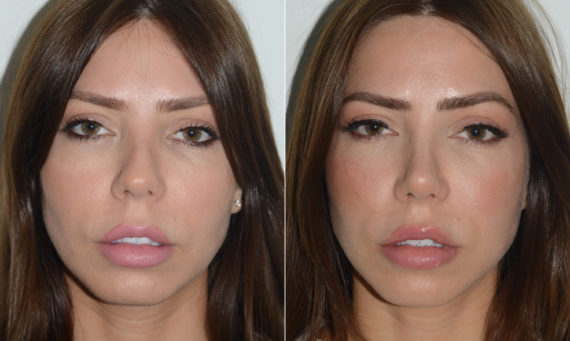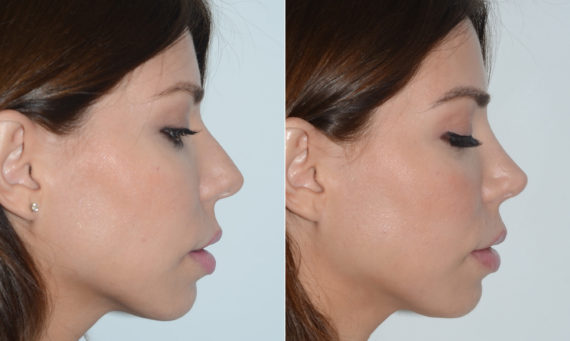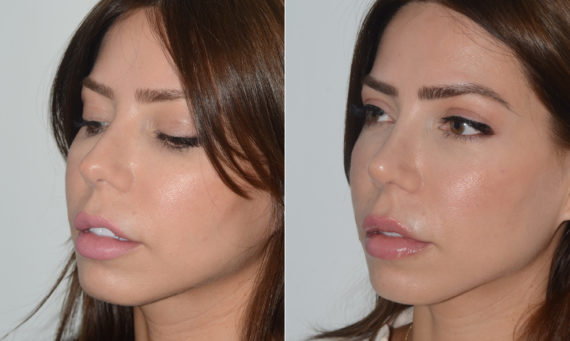Rhinoplasty, commonly referred to as a nose job, is a surgical procedure that modifies the shape and appearance of the nose. One advanced technique in rhinoplasty, enhancing nose structure with cartilage grafts, provides additional support and refines the nose’s contour.

The Role of Cartilage Grafts in Rhinoplasty
A rhinoplasty depends much on cartilage grafts. They are meant to rectify flaws, give structural support, and improve nose appearance.
Why Cartilage Grafts are Used
Key in rhinoplasty to improve the nasal septum and facial features are rhinoplasty cartilage grafts, usually derived from autologous cartilage. They treat a variety of nasal problems including saddle nose deformity, nasal congestion, and a crooked nose.
Grafts can widen nasal channels, enhance nasal tip form, and raise nasal dorsum. An expert surgeon may use lateral cartilages, dorsal onlay grafts, or spreader grafts in difficult operations including secondary rhinoplasty and revision surgeries.
Benefits of Using Cartilage in Nose Jobs
In a nose job, cartilage is a great material for grafts. These grafts, which can come from your septum, ear, or rib, have many benefits. They’re strong, flexible, and work well with your body, so there’s a lower chance of infection or rejection. Especially in Asian rhinoplasty to create a flawless face blend, they give a natural look and feel, therefore improving the aesthetic result of the rhinoplasty.
Types of Cartilage Grafts in Rhinoplasty
Autografts, allografts, and xenografts are three basic forms of cartilage grafts used in rhinoplasty.
Autografts: Using Your Own Cartilage
Often from the septal cartilage, ear cartilage, or rib cartilage, autografts use the patient’s cartilage. Used in main rhinoplasty and revision operations, autografts such as autologous cartilage have low rejection risk and no disease transmission risk.
Whether they are harvested by an experienced surgeon from the nasal septum, the caudal septum, or the lateral cartilages of the ear or rib, they cater to individual patient needs and previous surgeries.
Allografts: Donor Cartilage
Allografts use donor cartilage when the patient’s septum or ear has an insufficient source of cartilage for the rhinoplasty procedure. Often utilized in secondary rhinoplasty or revision procedures is this graft material, presumably a portion of cartilage from a human donor. Under the direction of a rhinoplasty surgeon, allografts—including costal cartilage grafting—despite a somewhat higher risk of infection and rejection remain viable.
Xenografts: Animal Cartilage
Usually from a cow or pig, xenografts incorporate animal cartilage. Xenografts can be a choice when nasal cartilage or auricular cartilage is inappropriate since less often employed in surgical operations due of higher rejection risk and ethical issues. An expert plastic surgeon decides to employ xenografts based on the patient’s face traits, healing mechanism, and possible immunological response.
When is a Cartilage Graft Necessary for Your Nose Job?

A surgeon could employ a cartilage graft mostly for structural problems or to improve the nose’s cosmetic look.
Structural Issues
Structural problems in the nose including a deviated septum, a collapsed nasal valve, or a saddle nose deformity can be corrected using cartilage grafts. Among the functional issues these disorders can bring about is trouble breathing.
Aesthetic Enhancements
Additionally employed for aesthetic improvements are cartilage grafts. A graft might be used, for instance, to straighten a nose, improve a bulbous nasal tip, or augment a flat nasal bridge.
The Incorporation of Cartilage Grafts in Rhinoplasty Surgery
Preoperative Planning
During the initial consultation, the surgeon will thoroughly examine the patient’s nose and discuss their aesthetic goals. The surgeon will then develop a customized surgical plan, which may include the use of autografts, allografts, or xenografts, depending on the patient’s specific needs and the availability of donor cartilage.
Surgical Steps
Rhinoplasty with grafts involves making incisions in the nasal cavities or columella, separating the skin from the subcutaneous tissue, cartilage, and bone. The nasal structure is reshaped, potentially involving the lateral cartilages or caudal septum.
Graft materials like autogenous rib cartilage or auricular cartilage are inserted, and dorsal onlay grafts or spreader grafts may be added as needed. The skin is then repositioned over the new nasal framework.
This surgery is typically performed under general anesthesia and varies in duration based on whether it’s a primary or revision rhinoplasty.
Recovery After Rhinoplasty with Cartilage Grafts
The recovery process from rhinoplasty involving cartilage grafts varies based on individual patient and surgical techniques.
Immediate Postoperative Care
After surgery, patients may have gauze or a soft splint on their nose for support. Swelling, bruising, and discomfort can be managed with prescribed pain medication. It’s crucial to follow the surgeon’s instructions, which include avoiding strenuous activities and refraining from blowing the nose.
Long-term Recovery
Long-term recovery from rhinoplasty with graft material involves gradual healing of the nasal tissues. Swelling and bruising subside in a few weeks, but full healing and visible final results can take a year or more. Regular follow-up appointments with the rhinoplasty surgeon are crucial to monitor healing and address concerns.
Risks and Complications of Cartilage Grafts in Rhinoplasty
While rhinoplasty with grafts is generally safe and effective, as with any cosmetic surgery, it carries certain risks and potential complications.
Rejection Risks
One of the main risks associated with cartilage grafts is the possibility of rejection, especially with allografts and xenografts. Rejection occurs when the body’s immune system recognizes the graft as a foreign material and attacks it. However, this risk is significantly lower with autografts, as the graft is made from the patient’s own tissue.
Infection and Other Complications
In addition to rejection, other potential complications of grafts in rhinoplasty include infection, bleeding, scarring, and changes in skin sensation. There is also the risk of aesthetic complications, such as asymmetry or dissatisfaction with the final result. Choosing a highly skilled and experienced surgeon can significantly minimize these risks.
FAQs About Cartilage Grafts in Rhinoplasty
Absolutely, autologous cartilage, from your septal cartilage, ear cartilage, or rib cartilage, can be used in rhinoplasty procedures. This autograft method uses donor sites like the nasal septum, conchal cartilage of the ear, or costal cartilage from ribs, depending on the amounts of cartilage required.
Recovery from rhinoplasty with grafts varies per patient and complexity of the surgical procedures. Swelling and bruising often subside in two weeks, but the final result may take up to a year as soft tissues continue to heal, particularly in complex procedures such as rib cartilage rhinoplasty or ear cartilage graft rhinoplasty.
While synthetic materials and silicone implants can be used as alternatives in rhinoplasty, autologous cartilage remains the preferred rhinoplasty technique among experienced plastic surgeons due to its compatibility and lower risk of complications.
Graft rejection signs, though rare, include redness, swelling, pain, and changes in nose shape. It’s crucial to reach out to your rhinoplasty surgeon if these symptoms arise, especially in cases with autologous rib cartilages or autogenous cartilages, as the risk of rejection may increase.
Cartilage grafts, such as septal cartilage grafts, rib grafts, or auricular cartilage grafts, enhance the nose’s overall appearance. They can rectify a crooked nose, remove a hump, refine the nasal dorsum, and fix structural issues. A rhinoplasty procedure with cartilage grafts, performed by a board-certified plastic surgeon, aims to yield a natural-looking nose that blends with other facial features.




